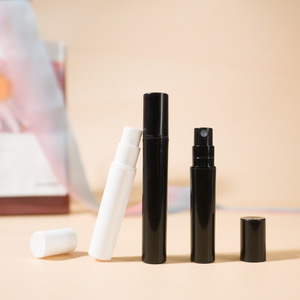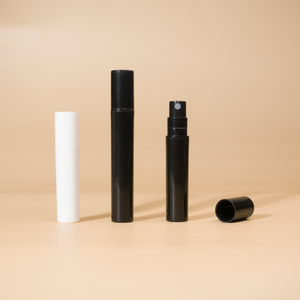
All categories
Featured selections
Trade Assurance
Buyer Central
Help Center
Get the app
Become a supplier

(4783 products available)














































 Ready to Ship
Ready to Ship





Essence Atomizer
The essence atomizer is a restorative cream packing tool that offers the delicate, fogged-up spray needed for some liquids. It is appropriate for beauty and cosmetic products that need an exceptional appeal to the liquid's texture, such as serums and lotions. Essence atomizers often feature slender, soft sprayers that provide a thin, mist-like application. This quality makes them fantastic for skin applications in which a light, even application is desired; for example, many perfume bottles with atomizer sprays can also be found in skin moisturizers.
Industrial Atomizer
The industrial atomizer is meant to spray thick fluids, chemicals, coatings, and larger-scale industrial liquids than smaller cosmetic ones. Strong, multi-faceted atomizers might manage bigger jobs that need a broader utility range, such as painting and coating chemicals in manufacturing. Spray painting equipment used in a factory or fleet, for example, requires a heavy-duty industrial atomizer.
Dry Powder Atomizer
A dry powder atomizer creates an EPA-compliant thin, even powder layer to medicine vial mixtures intended for inhalation therapy. This atomizer utilizes compressed air or an ultrasonic wave to break down into small particles, allowing the powder for deep penetration in the lungs. Typical applications are pulmonary medications and biological formulations that need proper dosing. The precise particle production and strong atomizer design for dry powders are essential for guaranteeing efficient treatments in health and medical fields.
Ultrasonic Atomizer
An ultrasonic atomizer creates mist by applying high-frequency sound waves to a liquid surface within a special piezoelectric transducer plate. This type of atomizer is frequently applied to nebulizers for drug delivery, humidifiers that provide moisture to the air, and other types of small liquid particles. Ultrasonic atomizers are useful in a range of industries, medical and non-medical, due to their fine particle production and silent operation.
Atomizer Head
The atomizer head is the part of the atomizer that begins the process of mixing and creating particles. An air compressor or manual operation drives it through a valve system. To produce the desired particle size, the atomizer head's design and flow control enable varying liquid rates and atomizing airs. Since different liquids need different atomizer head designs, one atomizer head will not be appropriate for every application.
Air Compressor
The air compressor delivers air in a controlled, steady manner to the atomizer head. The atomizing process's particle production and quality directly relate to the compressor size and power. Larger particles require high airflow, while fine mists need low airflow. Choosing the appropriate compressor depends on the liquid being atomized and particle size. A small aquarium air pump will work with atomizing perfume, but a huge industrial compressor will work with .atomizing paints.
Liquid Cup
The liquid cup is where the liquid to be atomized is stored. Different sizes of cups hold different volumes of liquids, depending on the needed duration of usage. The liquid is pulled into the airstream by gravity or a small pump, depending on the cup's height. A larger cup is beneficial for long tasks, but large cups add weight and make tools harder to control. A small cup will be appropriate for simple procedures.
Mixed Area
The mixed area is where air and liquid combine to form particles. Particles are a product of the atomizer head's mechanical energy, air pressure, and liquid fluid dynamics. Depending on the design of an atomizer, different mixed area types work better with specific atmospheres. Some need fine mists, while others need thick sprays. Understanding how this area functions enable users to optimize atomizers for their needs.
Atomizer Head Size
Atomizer heads vary depending on the type of liquid, from a fine mist for perfumes to a heavy coat for paints. Healthcare and packaging spray bottles can have ultra-small nozzles that are great for precise fogging medications or lubricants and wax for larger ones, such as moisture cream. A cozy head size can help avoid blockages and guarantee efficient atomizing by allowing the liquid to flow freely.
Air Pressure Control
Proper atomizers must maintain at least 5-30 PSI levels of air pressure for excellent atomizing because higher pressures generate finer particles. Still, too much pressure can cause an unsafe situation and loss of product. It's crucial to check the specifications of liquid and usage to find the appropriate level. Adjusting air pressure makes particles reach a target size during operations.
Flow Rate
Atomizers vary in the liquid flow rate that can pass through them in a certain time. Typical flow rates range from 0.1 to 2 milliliters per minute, depending on the task. Low rates are positioned for fine applications requiring great control, while high liquid rates suit jobs requiring larger coverage. Matching the flow rate with atomizer air and liquid requirements will keep an ideal work environment.
Flush After Each Use
Cleaning the atomizer by mixing water and a cleaning fluid and running the machine to empty the liquid cup and spray line commences the maintenance process. This prevents the liquid from hardening inside the cup and nozzle, which curtails the machine's efficiency and operation.
Use Soft Cloth
A soft cloth should wipe the outside to be free of dust and leftover particles once in a while. This aids in maintaining the components and increases their life. Never use rough material or flames on the atomizer; this may damage or even create some risks.
Check for Wear
The important frequently inspected part is the atomizer head or nozzle since it's the most used component. Great wear and tear means less efficiency in atomizing liquid and lesser particle production. Spraying with an atomizer will not produce the expected results without changing worn-out components.
Store Properly
Cover an atomizer carefully after every use to store it in a cool environment free of moisture. This helps avoid corrosion and internal damage due to environmental factors. Proper storage means an atomizer is at its best working state the next time it is needed.
Atomizers, such as ultrasonic ones, are commonly used by hospitals, doctor's offices, and patients to deliver medications through inhalation. These are better than traditional oral methods because they spray medical powder for oral suspension in fine particles that can reach deep into the lungs for faster absorption. This allows healthcare providers to offer treatments effectively while patients manage chronic respiratory conditions.
Atomizers, like cosmetic air atomizers, provide skin care and beauty products such as perfumes, lotions, and facial mists in a fine spray. This ensures even application, minimizing product wastage, and improving effectiveness. Salons and spas, retail stores, and other businesses consider atomizers essential for offering premium services and products.
For farmers who need to apply fertilizers, pesticides, and herbicides evenly across large crop fields, a powerful industrial atomizer is an essential tool for agricultural applications. In order to optimize plant health and increase yields, farmers may use different atomizer heads, air pressures, and flow rates depending on the type of product and crop.
Big factories, manufacturing plants, and car refinishers atomize paints, coatings, and sealants using atomizers with various heavy-duty applications. Atomizer selection is affected by the coating's viscosity, the preferred method of application, and the expected results. Effectively and efficiently applying protective coatings while producing consistent finishing results is important for industrial operations.
Atomizers are commonly used in mechanical repair shops, factories with large engine fleets, and heavy equipment operators to evenly aerosolized machine oils and lubricants into hard-to-reach engine and machinery areas. This prolongs equipment life, ensuring that all parts receive adequate lubrication. Choosing the right atomizer depending on engine size and fuel type aids effectiveness in preventing breakdown and cut down on frequent repairs.
Performance
Performance is the first and most important thing to consider as the atomizers intended use, such as particle size, air-lift height, and coverage area. It is necessary to determine requirements before handling. The surface area is determined by a combination of the effective distance from the source of heat and particle size to the performance.
Durability
The durability of atomizers should also be taken into account, especially during industrial uses. Construction materials need to hold up against certain chemical solutions, temperature change, moisture, and physical impacts. A tough atomizer can minimize maintenance needs and increase reliable operation through longer product life.
Cost
Consider both the upfront and long-term costs, including maintenance and repairs. Although cheaper models may cost less at first, investing more expensive, quality atomizers can yield savings in operational efficiency and lower repair needs over time. It ensures a good balance between capital expenditure and operating cost over time.
Type of Liquid
Different kinds of atomizers support different liquids. Dry powder atomizers work for good suspension ideas in dense, thick liquids, while essence atomizers are more suited for light, low viscosity liquids. When the atomizer type truly matches the liquid used, efficiency increases, ensuring proper mixing and application.
Ease of Use
Various atomizers have manual or powered controls, making one easier to handle than the other during cleaning and maintenance. Choosing an easy-to-use and maintain atomizer within its intended scope of use will help reduce the training time and troubleshooting that may occur.
A1: Powder atomizer is a tool used to spray dry powders, mainly for medication and coating applications. It converts powders into fine particles, mixing them with air to suspend and project them onto surfaces or into the air for inhalation, allowing even coating or effective drug delivery.
A2: A powder atomizer works by combining powdered materials with a propelling force, usually compressed air or a fluid stream. Atomizers pulverize the powder into fine particles using energy, creating a mist or spray that can be used for various applications, such as coating processes or medical treatments.
A3: Using a spray atomizer in medicine provides effective drug delivery systems, particularly in respiratory therapies. It enables the generation of fine particles suitable for inhalation, reaching deep into the lungs for better absorption. This method is non-invasive, allowing for quicker and more direct effects than traditional oral medication methods.
A4: Yes, powder atomizers are used extensively in coating applications. They are employed in industrial settings for processes like electrostatic powder coating, where an atomizer evenly sprinkles powder paint onto surfaces to create durable and uniform finishes on various materials, including metals and plastics.
A5: When choosing a powder atomizer, factors like the type of powder, atomization process, application requirements, and equipment compatibility should be considered. Key considerations include the desired particle size, atomization efficiency, environmental conditions, and the atomizer's ease of cleaning and maintenance to ensure optimal performance for the intended use.